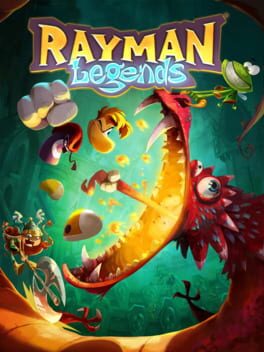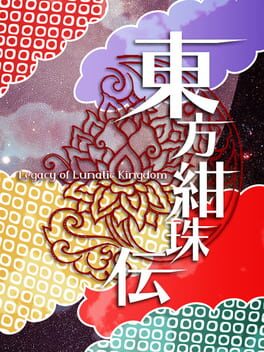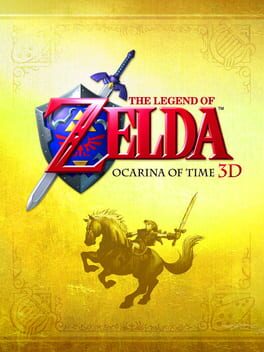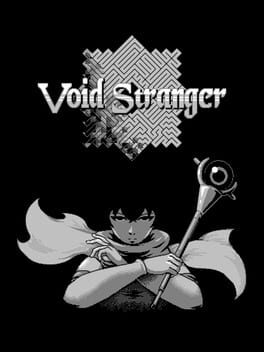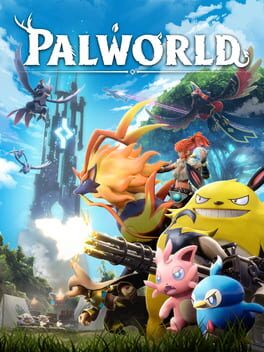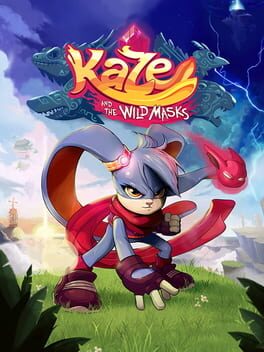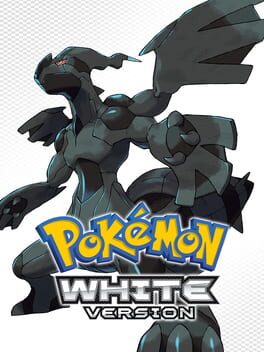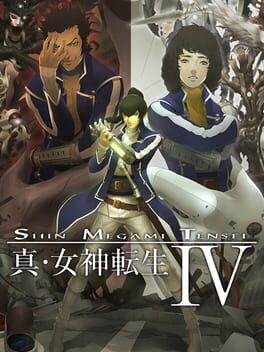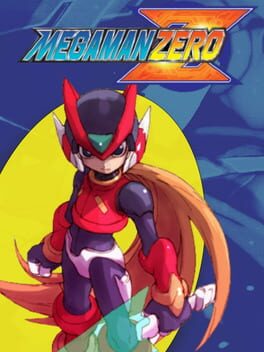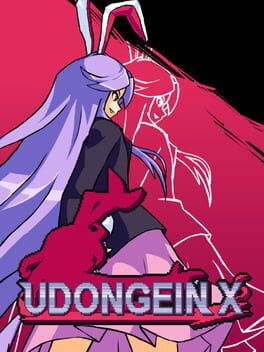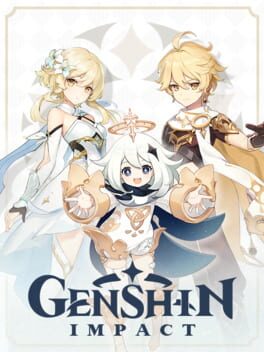CielTeamSix
2013
I’m going to destroy the nonexistent credibility I have and criticize OOT. It’s not bad by any stretch, more an indication of my changing tastes and what I look for in a video game. I admit I was never a big fan of this game, but I couldn’t place my finger on why. After some deliberation, I figured it out.
Zelda is an action, puzzle, adventure franchise. You explore the world for secrets, complete puzzles to traverse the dungeons, you fight bosses and enemies, it’s all self-explanatory. OOT’s job was translating the design of the previous Zelda’s, notably ALTP, into 3D. Assessing how well it accomplishes that job, it’s solid, but far from perfect.
ALTP’s Hyrule field felt expansive but contained, just the right size to pack full of secrets. Progression was open ended enough to feel player lead without relying on a guide. I remember finding items such as the flippers and medallions thinking I found some broken powerup, only to realize that they were required to open certain dungeons. I remember how I needed to use the hook-shot to access the second half of the Dark World. I remember how items from one dungeon were required to beat another. I remember how it all culminated in Ganon’s Tower; a gauntlet that remains brutal no matter how many heart pieces you have.
It’s surprising to play a game with the confidence to gatekeep progression behind the players own curiosity to explore. Ironically, it gives the player everything they need to succeed but remains brutal in its challenge. It somehow conveys these values better than Breath of the Wild and Tears of the Kingdom, games centered around player discovery.
Ocarina of Time is infamous for Hyrule Field, a sprawling green field of nothing, but its other areas are just as bland. Lake Hylia is a lake housing the Water Temple in the middle, Death Mountain is a linear path containing stops to Dodongo’s Cavern and the Goron City, Zoro’s Domain is a straight line ending in the waterfall where you play Zelda’s Lullaby.
It’s not the lack of meaningful exploration, or Link’s slow movement, that’s the issue (though they are factors.) It’s as if these areas have no interest in anything besides getting you to the next dungeon or “place-where-the-story-happens.” It’s the lack of detours and depth that makes this iteration of Hyrule less interesting. The world design is the definition of something that’s “aged poorly.” What was once impressive with its ability to render sprawling landscapes only becomes less impressive with time, demonstrating a lack of foresight.
The bosses in A Link to the Past sell the “action” in action-adventure. They had weaknesses, you often used the dungeon item to provide an advantage, but they were fights first and foremost. They required strategy and skill to overcome. The Helmasaur King had you use items to break his helmet. After his helmet broke, the fight continued. You now had to attack his green weak point, but he was still shooting fireballs and using tail swipes. Trinexx needed the Ice and Fire rod to stun the protruding heads. Once they’re defeated, the main head starts snaking around the player, subverting the fight in a way that’s surprising and memorable. With the right strategy, many of these bosses can be trivialized, but they’re designed in a way that tests both your knowledge of the mechanics and skills in maneuvering Link to dodge attacks. The interactions were varied and nuanced in a way disturbingly absent from the rest of the series.
Ocarina of Time. Gohma, wait for its eye to turn red then attack with the slingshot, it then lies down for you to attack it. King Dodongo, wait for its mouth to open to throw a bomb, it then lies down for you to attack it. Twinrova, you wait for them to shoot a beam so you can reflect it, they then lie down for you to attack. These are egregious examples, but every fight is like this. It’s a boring and binary interaction repeated 9+ times.
The bosses and world design are a simple product of my central problem with OOT. It’s transition to 3D adopts a more streamlined and predictable approach to everything you encounter, and that’s unproductive when applied to a game claiming to be about “adventure.” The appeal of an adventure is finding what surprises await you, but when it’s so easy to boil every encounter down to a formula it gets less interesting. A Link to the Past has stayed timeless in my mind because it doesn’t fall for the trap of predictability. Unfortunately, Ocarina of Time does, and it’s a worse game for it.
You can say that all these aspects were simple growing pains of a franchise moving toward the third dimension, with which I will wholeheartedly agree. However, the term “growing pains” implies the thing experiencing the shortcomings has moved past the stage of development they were in, and unfortunately, I disagree.
My biggest problem with OOT isn’t with the game itself, but with the Victory Disease it gave the franchise. Every subsequent 3D Zelda except for BOTW is essentially an attempt to one-up Ocarina of Time by tying it to a new novelty. Unknowingly inheriting the same flaws and cliches, never evolving as a product.
Wind Waker, what if Ocarina of Time was more expansive? Twilight Princess, what if Ocarina of Time was darker? Skyward Sword, what if Ocarina of Time was a shitty prequel? It’s a reductive assessment of these games’ quality, but their ties to a flawed game limits what they can do. As a result, they fail to interest me.
Ocarina of Time is not bad by any stretch, but it’s not what I look for in a video game anymore. I chase things that are new, surprising, risky, and not afraid to offend. Ocarina is not what I look for in an adventure. You can love this game, along with its successors all you want, and I will understand why. Unfortunately, I can’t share that passion with you.
Zelda is an action, puzzle, adventure franchise. You explore the world for secrets, complete puzzles to traverse the dungeons, you fight bosses and enemies, it’s all self-explanatory. OOT’s job was translating the design of the previous Zelda’s, notably ALTP, into 3D. Assessing how well it accomplishes that job, it’s solid, but far from perfect.
ALTP’s Hyrule field felt expansive but contained, just the right size to pack full of secrets. Progression was open ended enough to feel player lead without relying on a guide. I remember finding items such as the flippers and medallions thinking I found some broken powerup, only to realize that they were required to open certain dungeons. I remember how I needed to use the hook-shot to access the second half of the Dark World. I remember how items from one dungeon were required to beat another. I remember how it all culminated in Ganon’s Tower; a gauntlet that remains brutal no matter how many heart pieces you have.
It’s surprising to play a game with the confidence to gatekeep progression behind the players own curiosity to explore. Ironically, it gives the player everything they need to succeed but remains brutal in its challenge. It somehow conveys these values better than Breath of the Wild and Tears of the Kingdom, games centered around player discovery.
Ocarina of Time is infamous for Hyrule Field, a sprawling green field of nothing, but its other areas are just as bland. Lake Hylia is a lake housing the Water Temple in the middle, Death Mountain is a linear path containing stops to Dodongo’s Cavern and the Goron City, Zoro’s Domain is a straight line ending in the waterfall where you play Zelda’s Lullaby.
It’s not the lack of meaningful exploration, or Link’s slow movement, that’s the issue (though they are factors.) It’s as if these areas have no interest in anything besides getting you to the next dungeon or “place-where-the-story-happens.” It’s the lack of detours and depth that makes this iteration of Hyrule less interesting. The world design is the definition of something that’s “aged poorly.” What was once impressive with its ability to render sprawling landscapes only becomes less impressive with time, demonstrating a lack of foresight.
The bosses in A Link to the Past sell the “action” in action-adventure. They had weaknesses, you often used the dungeon item to provide an advantage, but they were fights first and foremost. They required strategy and skill to overcome. The Helmasaur King had you use items to break his helmet. After his helmet broke, the fight continued. You now had to attack his green weak point, but he was still shooting fireballs and using tail swipes. Trinexx needed the Ice and Fire rod to stun the protruding heads. Once they’re defeated, the main head starts snaking around the player, subverting the fight in a way that’s surprising and memorable. With the right strategy, many of these bosses can be trivialized, but they’re designed in a way that tests both your knowledge of the mechanics and skills in maneuvering Link to dodge attacks. The interactions were varied and nuanced in a way disturbingly absent from the rest of the series.
Ocarina of Time. Gohma, wait for its eye to turn red then attack with the slingshot, it then lies down for you to attack it. King Dodongo, wait for its mouth to open to throw a bomb, it then lies down for you to attack it. Twinrova, you wait for them to shoot a beam so you can reflect it, they then lie down for you to attack. These are egregious examples, but every fight is like this. It’s a boring and binary interaction repeated 9+ times.
The bosses and world design are a simple product of my central problem with OOT. It’s transition to 3D adopts a more streamlined and predictable approach to everything you encounter, and that’s unproductive when applied to a game claiming to be about “adventure.” The appeal of an adventure is finding what surprises await you, but when it’s so easy to boil every encounter down to a formula it gets less interesting. A Link to the Past has stayed timeless in my mind because it doesn’t fall for the trap of predictability. Unfortunately, Ocarina of Time does, and it’s a worse game for it.
You can say that all these aspects were simple growing pains of a franchise moving toward the third dimension, with which I will wholeheartedly agree. However, the term “growing pains” implies the thing experiencing the shortcomings has moved past the stage of development they were in, and unfortunately, I disagree.
My biggest problem with OOT isn’t with the game itself, but with the Victory Disease it gave the franchise. Every subsequent 3D Zelda except for BOTW is essentially an attempt to one-up Ocarina of Time by tying it to a new novelty. Unknowingly inheriting the same flaws and cliches, never evolving as a product.
Wind Waker, what if Ocarina of Time was more expansive? Twilight Princess, what if Ocarina of Time was darker? Skyward Sword, what if Ocarina of Time was a shitty prequel? It’s a reductive assessment of these games’ quality, but their ties to a flawed game limits what they can do. As a result, they fail to interest me.
Ocarina of Time is not bad by any stretch, but it’s not what I look for in a video game anymore. I chase things that are new, surprising, risky, and not afraid to offend. Ocarina is not what I look for in an adventure. You can love this game, along with its successors all you want, and I will understand why. Unfortunately, I can’t share that passion with you.
2023
Was in the process of drafting out some grand essay, but figured nothing will convey my thoughts on this game better than a simple spiel.
Void Stranger is everything I wanted from a video game and then some. It's a bold reminder of why I stay invested in the medium.
It's ambitious, disciplined, funny, frustrating, horny, heart wrenching, and it balances all these emotions with utmost care and attention to detail. I haven't played anything like it, and I doubt I ever will.
Simply put, it's one of the best games ever made.
Thank you for such a beautiful memory.
Ad Meliora
Void Stranger is everything I wanted from a video game and then some. It's a bold reminder of why I stay invested in the medium.
It's ambitious, disciplined, funny, frustrating, horny, heart wrenching, and it balances all these emotions with utmost care and attention to detail. I haven't played anything like it, and I doubt I ever will.
Simply put, it's one of the best games ever made.
Thank you for such a beautiful memory.
Ad Meliora
2024
2023
I’m not quite sure what the motivation was behind this. Looking at the description, Kaze is apparently a “tribute” to 90s platformers, but the devs seemed to have forgotten what was beloved about that era.
It’s a “tribute” to the 90s in the same vein as someone paying tribute the Mona Lisa by recreating it in crayon. Do you have fond memories of scouring each level for 100 coins in Super Mario World? Do you remember the slow, tedious pace of levels in DKC2? Do you get excited thinking about Mega Man X and its bosses that force you to wait around for their weak points?
Funnily enough, these were the most original parts of Kaze. There wasn’t a single memorable level or gimmick that wasn’t taken from another game, and yet its own ideas undermine the good concepts from which it stole.
The worst part is that Kaze is surprisingly competent. The presentation is on point, the overall artwork and character design is pleasant, and Nintendo’s four-step design process is adhered to. All this talent is wasted on a product with so little ambitious.
Kaze is forgettable, and that’s the gravest insult I could throw at it. It wishes for nothing but to remind you of other games you could be playing. It’s a product that will only be lost to the void of time, with no one appearing to salvage it with memory.
It’s a “tribute” to the 90s in the same vein as someone paying tribute the Mona Lisa by recreating it in crayon. Do you have fond memories of scouring each level for 100 coins in Super Mario World? Do you remember the slow, tedious pace of levels in DKC2? Do you get excited thinking about Mega Man X and its bosses that force you to wait around for their weak points?
Funnily enough, these were the most original parts of Kaze. There wasn’t a single memorable level or gimmick that wasn’t taken from another game, and yet its own ideas undermine the good concepts from which it stole.
The worst part is that Kaze is surprisingly competent. The presentation is on point, the overall artwork and character design is pleasant, and Nintendo’s four-step design process is adhered to. All this talent is wasted on a product with so little ambitious.
Kaze is forgettable, and that’s the gravest insult I could throw at it. It wishes for nothing but to remind you of other games you could be playing. It’s a product that will only be lost to the void of time, with no one appearing to salvage it with memory.
There’s something inherently insecure and pathetic about making an entire game to poorly defend the concept behind your own franchise.
It tries to frame itself as a discussion but it comes off as a straw man saying this is wrong, the game spending its entire runtime telling you he’s wrong, he says he’s wrong and goes away. No lesson is learned, nothing is gained, and the status quo is restored like normal. What was the point?
There really is nothing wrong with keeping Pokemon in tiny balls because they helped build a few towns? Because they like it? Imagine making that argument for any actual social justice movement.
Kind of disgusting, but it did give us Hydreigon, probably the best thing Gamefreak ever produced.
It tries to frame itself as a discussion but it comes off as a straw man saying this is wrong, the game spending its entire runtime telling you he’s wrong, he says he’s wrong and goes away. No lesson is learned, nothing is gained, and the status quo is restored like normal. What was the point?
There really is nothing wrong with keeping Pokemon in tiny balls because they helped build a few towns? Because they like it? Imagine making that argument for any actual social justice movement.
Kind of disgusting, but it did give us Hydreigon, probably the best thing Gamefreak ever produced.
This review contains spoilers
When I think of my favorite games, I think of products where each detail and decision was made in harmony. Culminating in an experience that uses every aspect of a video game to convey a message. What makes SMT IV special is how it’s the opposite of what I just described, it’s a product where every asset from gameplay to story is competing with one another. Culminating in a hodge podge of ingredients and recipes with no finished meal in sight. It’s a half game.
It’s Frankenstein’s monster made of ideas ranging wildly in quality. I admit that there are pockets of good, but even that is incidental. The soundtrack is great, the world building and underlying mystery is solid, but they ring hollow as the rest of the game isn’t up to par. The storyline is a debate on ethics in which both contenders are embarrassing caricatures of the ideas they’re supposed to represent. The game cowers away from this discussion for a “both sides are bad” conclusion that just feels insulting. There’s no reason to care about anyone because they’re all pawns for the writers to do whatever they want with. A character will throw a monologue at you explaining their motivation, only to have them betray it for the sake of the plot moving forward.
The gameplay is supposed to be challenging to represent the hostility of Tokyo, but everything is so easy and cheesable. The structure of an open world with multiple side quests conflicts with the story of being a mercenary completing time-sensitive missions. The world building portrays Tokyo as a rough and gruff place, but the story tries to make you care about it near the tail end. The game is marketed as a visual novel in which you choose your own adventure, but your character is a blank slate who only does what others tell him to.
This is why SMT IV is so fascinating to me. It gets worse the more I think about it. It’s this decayed onion where peeling back a layer reveals one stinkier and rottener than the last. I haven’t talked about the broken combat system, the multitude of mechanics that go nowhere, or the dubious design decisions for I fear this review would get too repetitious. I’ve played worse, I’ve played soulless cash grabs that only serve to take consumer’s money, and SMT IV isn’t one of those games. However, it’s my prime example of a “bad game,” it’s what I would tell upcoming developers what not to do to save face.
It’s Frankenstein’s monster made of ideas ranging wildly in quality. I admit that there are pockets of good, but even that is incidental. The soundtrack is great, the world building and underlying mystery is solid, but they ring hollow as the rest of the game isn’t up to par. The storyline is a debate on ethics in which both contenders are embarrassing caricatures of the ideas they’re supposed to represent. The game cowers away from this discussion for a “both sides are bad” conclusion that just feels insulting. There’s no reason to care about anyone because they’re all pawns for the writers to do whatever they want with. A character will throw a monologue at you explaining their motivation, only to have them betray it for the sake of the plot moving forward.
The gameplay is supposed to be challenging to represent the hostility of Tokyo, but everything is so easy and cheesable. The structure of an open world with multiple side quests conflicts with the story of being a mercenary completing time-sensitive missions. The world building portrays Tokyo as a rough and gruff place, but the story tries to make you care about it near the tail end. The game is marketed as a visual novel in which you choose your own adventure, but your character is a blank slate who only does what others tell him to.
This is why SMT IV is so fascinating to me. It gets worse the more I think about it. It’s this decayed onion where peeling back a layer reveals one stinkier and rottener than the last. I haven’t talked about the broken combat system, the multitude of mechanics that go nowhere, or the dubious design decisions for I fear this review would get too repetitious. I’ve played worse, I’ve played soulless cash grabs that only serve to take consumer’s money, and SMT IV isn’t one of those games. However, it’s my prime example of a “bad game,” it’s what I would tell upcoming developers what not to do to save face.
2002
Not the best Mega Man game, but the most unique.
One of my favorite moments is halfway through the desert escort mission. After defeating Anubis Necromancess, a very tough boss for the point in which it’s available, the mission is revealed to be far from over. You are tasked with escorting the sole survivor back to the start of the mission. It’s simple, but enemies can easily catch you off guard, killing the escort in the process. This part of the level isn’t “fun,” it’s mundane, it’s kind of tedious, but it’s a perfect essence of Mega Man Zero is trying to be. This isn’t a game about being an untouchable badass who slays countless armies. Instead, it is about doing what you can to help and support others.
The Resistance is fleeting, Zero has no memories of who he is or what he’s doing. Nothing about the circumstances of the characters is exciting or enabling. Zero must regain his moves through muscle memory, the cyber elf system is under explained and superfluous. Missions are laid out in an open-ended structure where players can access certain missions after completing others, allowing players to access and complete harder missions before easier ones. In a detached sense of how games should work, none of these decisions are “logical” or provide a sense of fairness, but nothing about the world of Mega Man Zero is fair. There’s a feeling of insecurity pervading throughout the game, Neo Arcadia can and will attack at any moment, it’s disempowering by its very construction.
The world is as oppressive as it is mundane. Missions have Zero doing what boils down to busy work. Rescuing hostages, destroying servers to jumble communication, defending the base from enemies, these also occur in repeating locations. One mission has you occupy a factory for resources, only to have that factory compromised in a later mission. The justification for this structure lies in the circumstances. You can’t focus on taking down Neo-Arcadia if your soldiers are captured, if you’re running out of resources, if you’re barely staying afloat thanks to some ancient robot you resurrected. Crash is one of the best boss themes in the franchise. It balances tension and mundane to be a perfect encapsulation of what the game is about.
The game isn’t supposed to make you feel confident, but that doesn’t mean you shouldn’t triumph through adversity. After traversing a challenging opening stage, the player is introduced to a boss that’s fast and oppressive. The fight is chock full of mechanics and decisions meant to stress the player. A time limit exists, Aztec’s projectiles stick to the walls and floor, everything about the boss is meant to punish passivity. Rather than shutting the game off and complaining that the boss is bullshit, players are supposed to study the patterns and movements to look for purposeful openings. It’s this mentality that gets the player through the rest of the game, no matter how hard the boss hits, the underlying strategy remains unaltered.
Mega Man Zero is described as a “rough first step,” a game riddled with “poor design decisions,” or even a “bad game disguised as a good one.” I concede that it’s far from perfect, but I can’t help but feel that the criticisms levied are born from a lack of understanding. As if they have preconceived ideas of what Mega Man should be, anything deviating from that expectation being deemed a “failure.” In truth, Mega Man Zero is one of the most memorable games in the franchise, at the time, only being rivaled by Mega Man X almost a decade prior. It only accomplished that through the will to ditch a formula and try something new.
One of my favorite moments is halfway through the desert escort mission. After defeating Anubis Necromancess, a very tough boss for the point in which it’s available, the mission is revealed to be far from over. You are tasked with escorting the sole survivor back to the start of the mission. It’s simple, but enemies can easily catch you off guard, killing the escort in the process. This part of the level isn’t “fun,” it’s mundane, it’s kind of tedious, but it’s a perfect essence of Mega Man Zero is trying to be. This isn’t a game about being an untouchable badass who slays countless armies. Instead, it is about doing what you can to help and support others.
The Resistance is fleeting, Zero has no memories of who he is or what he’s doing. Nothing about the circumstances of the characters is exciting or enabling. Zero must regain his moves through muscle memory, the cyber elf system is under explained and superfluous. Missions are laid out in an open-ended structure where players can access certain missions after completing others, allowing players to access and complete harder missions before easier ones. In a detached sense of how games should work, none of these decisions are “logical” or provide a sense of fairness, but nothing about the world of Mega Man Zero is fair. There’s a feeling of insecurity pervading throughout the game, Neo Arcadia can and will attack at any moment, it’s disempowering by its very construction.
The world is as oppressive as it is mundane. Missions have Zero doing what boils down to busy work. Rescuing hostages, destroying servers to jumble communication, defending the base from enemies, these also occur in repeating locations. One mission has you occupy a factory for resources, only to have that factory compromised in a later mission. The justification for this structure lies in the circumstances. You can’t focus on taking down Neo-Arcadia if your soldiers are captured, if you’re running out of resources, if you’re barely staying afloat thanks to some ancient robot you resurrected. Crash is one of the best boss themes in the franchise. It balances tension and mundane to be a perfect encapsulation of what the game is about.
The game isn’t supposed to make you feel confident, but that doesn’t mean you shouldn’t triumph through adversity. After traversing a challenging opening stage, the player is introduced to a boss that’s fast and oppressive. The fight is chock full of mechanics and decisions meant to stress the player. A time limit exists, Aztec’s projectiles stick to the walls and floor, everything about the boss is meant to punish passivity. Rather than shutting the game off and complaining that the boss is bullshit, players are supposed to study the patterns and movements to look for purposeful openings. It’s this mentality that gets the player through the rest of the game, no matter how hard the boss hits, the underlying strategy remains unaltered.
Mega Man Zero is described as a “rough first step,” a game riddled with “poor design decisions,” or even a “bad game disguised as a good one.” I concede that it’s far from perfect, but I can’t help but feel that the criticisms levied are born from a lack of understanding. As if they have preconceived ideas of what Mega Man should be, anything deviating from that expectation being deemed a “failure.” In truth, Mega Man Zero is one of the most memorable games in the franchise, at the time, only being rivaled by Mega Man X almost a decade prior. It only accomplished that through the will to ditch a formula and try something new.
2021
As someone whose introduction to Touhou is (basically) this game. It’s quite an experience. While the plot was intuitive enough, it partly expects you to know the breadth of characters and their backstories. I don’t know what the significance between Lunarians and Moon Rabbits is. I didn’t know why Reimu was going to chew Reisen out for what she was going to do. I didn’t understand the ending at all. But most importantly, I do not care. So please do not comment a paragraph explaining Touhou lore to me because I did not ask. Thank You!
The character design hits different, though. You got a girl with fire powers who looks like she’s wearing sweatpants, there’s a cowgirl with angel wings and a sick theme, there’s a girl in a nightgown and giant Santa hat. There’s an uncompromised, unhinged, nature to some of the wackier designs that I find appealing. It also helps that fighting them was the highlight of the game!
I found the ideas it presents to be the most interesting part. There’s a healthy variety of bosses and levels that, at the very least, keep the game novel. There’s a maze where you hit switches to flip the level and reveal hidden pathways, there are levels that introduce unique mini bosses in multiple iterations, there’s a boss that limits what moves the player has access to. What surprised me the most was how little ideas were stolen from previous Mega Man games. It felt like someone’s unique take on what they think a Mega Man game should be, Touhou characters and references placed aside.
Unfortunately, their ideal vision doesn’t quite align with mine. The variety is good like previously stated, but the game is too damn easy. It’s a combination of things, the fact that there are only 4 enemies across the entire game, the lack of iteration upon previous level ideas, the existence of infinite continues. It all places a hard cap on how complex or challenging a level can be. The developer, of course, remedied this by making you do precision platforming above instant death traps.
I said earlier that the bosses were the highlight of the game, I lied.
This is a cry for help. I can’t stop listening to the Udongein X OST. I’m currently listening to it while writing this review. It’s an addiction. I can’t go on a run anymore without humming this in my head for a consistent cadence. I need support.
It’s flawed, as many games are, but I find it admirable how one person was able to bridge the vibes and aesthetics of two series in a way that felt coherent and original. The fact that it’s also more mechanically and creatively inspired than a vast majority of Mega Man games (and probably Touhou, there’s 15+ of them, they can’t all be masterpieces) gives it extra points in my book.
HELP ME
The character design hits different, though. You got a girl with fire powers who looks like she’s wearing sweatpants, there’s a cowgirl with angel wings and a sick theme, there’s a girl in a nightgown and giant Santa hat. There’s an uncompromised, unhinged, nature to some of the wackier designs that I find appealing. It also helps that fighting them was the highlight of the game!
I found the ideas it presents to be the most interesting part. There’s a healthy variety of bosses and levels that, at the very least, keep the game novel. There’s a maze where you hit switches to flip the level and reveal hidden pathways, there are levels that introduce unique mini bosses in multiple iterations, there’s a boss that limits what moves the player has access to. What surprised me the most was how little ideas were stolen from previous Mega Man games. It felt like someone’s unique take on what they think a Mega Man game should be, Touhou characters and references placed aside.
Unfortunately, their ideal vision doesn’t quite align with mine. The variety is good like previously stated, but the game is too damn easy. It’s a combination of things, the fact that there are only 4 enemies across the entire game, the lack of iteration upon previous level ideas, the existence of infinite continues. It all places a hard cap on how complex or challenging a level can be. The developer, of course, remedied this by making you do precision platforming above instant death traps.
I said earlier that the bosses were the highlight of the game, I lied.
This is a cry for help. I can’t stop listening to the Udongein X OST. I’m currently listening to it while writing this review. It’s an addiction. I can’t go on a run anymore without humming this in my head for a consistent cadence. I need support.
It’s flawed, as many games are, but I find it admirable how one person was able to bridge the vibes and aesthetics of two series in a way that felt coherent and original. The fact that it’s also more mechanically and creatively inspired than a vast majority of Mega Man games (and probably Touhou, there’s 15+ of them, they can’t all be masterpieces) gives it extra points in my book.
HELP ME
2020
My roommate made me play this and never have I felt so repelled by a videogame.
He was doing a sidequest where the main objective was walking in a path laid out by the game, watching a 5 minute unskippable cutscene, then walking in a path to watch another unskippable cutscene. I endured like 20-30 minutes of this before I shut it off for health reasons.
I don't like being overly negative or hyperbolic, but if you gave me something to represent everything I hate about modern video games, this would fit the mold quite well.
He was doing a sidequest where the main objective was walking in a path laid out by the game, watching a 5 minute unskippable cutscene, then walking in a path to watch another unskippable cutscene. I endured like 20-30 minutes of this before I shut it off for health reasons.
I don't like being overly negative or hyperbolic, but if you gave me something to represent everything I hate about modern video games, this would fit the mold quite well.
2023
2015
